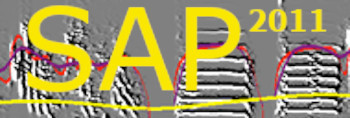Parameter settings & feature scale
| < PREVIOUS: Exploring tables | > NEXT: Animals table |
|
|
|
|
The Settings Table
This is an automatically generated input/output table that in most cases you will not need to access directly, but when encountering “strange behavior” of SAP2011 it might become useful to know something about it. The Settings replaces the “birds” table used in previous versions of SAP. There is only one “settings” table. As shown below, this table has a major role in SAP2011 “remembering” its previous state upon restart. However, not all the states are captured in Settings - the state of the recording channels (of the recorder) are stored in a table called Channels, and the settings of keys and other digital devices (if present) are stored in the NIDAQ table.
Settings table is 12 records: the first is used to store the settings of single analysis modules such as the Explore & Score and Feature Batch. The other 11 records are used to store multiple analysis modules as in Sound Live. The fields (entry types) and only 12 records (one record per recording channel). The first record is used as the default state for all the modules except for the live modules (you may think about this as 'channel 0'). The other 11 records are used for the real recording and processing “channels” of the recorder and of the live processing modules. Settings table communicates with all the SAP2011 modules and maintaining birds IDs, ages, recording and segmentation parameters, playbacks, etc. The Feature_Scale Table
The feature_scale table is an automatically generated table that contains one or several schema for scaling features. Features are scaled for several purposes, including similarity measurements, based their distribution. We are interested in two types of distributions: distribution of raw features (pitch, FM…) and the distribution of syllable features (mean_pitch, mean_FM, var_pitch, etc). To scale features we need to know the central tendency and width of the distributions in a representative sample of data (e.g., within the songs of 100 zebra finches). We use the median and the median absolute deviation (MAD) of each feature to characterize those distributions. SAP2011 comes with a zebra finch settings and users can easily add settings for other species, song types, etc. |
|
